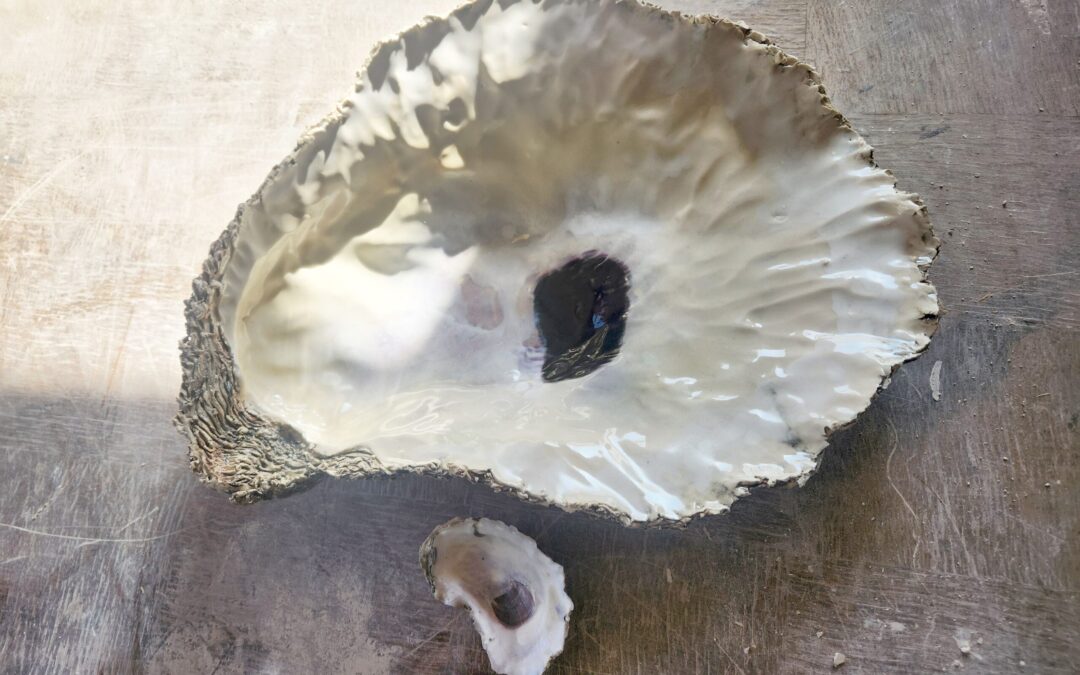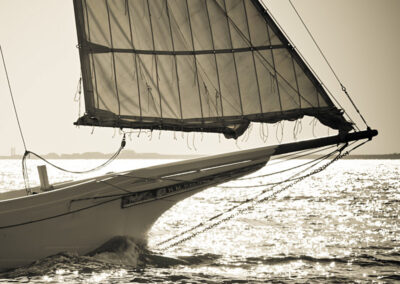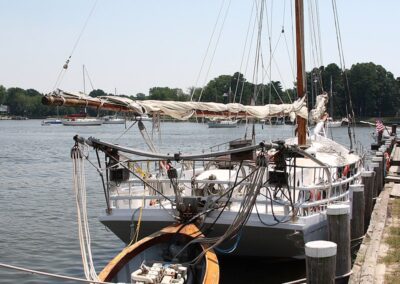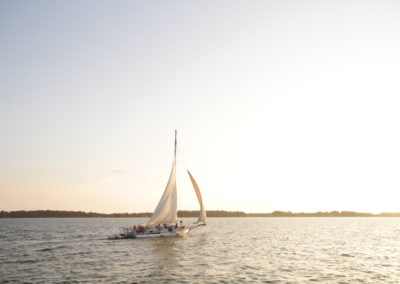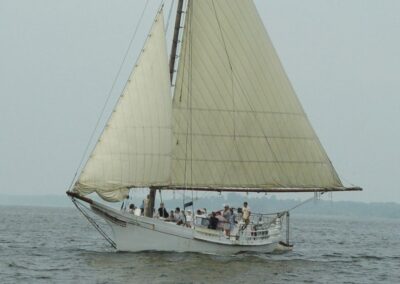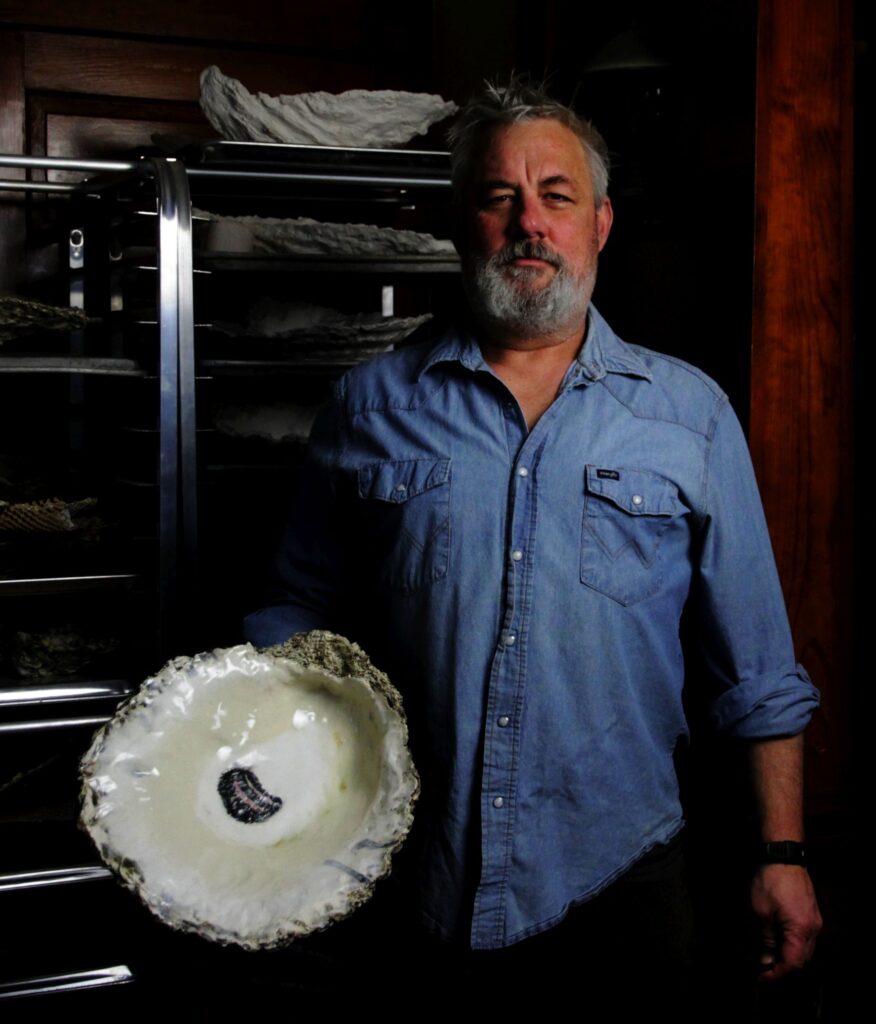03.20.2025 - Eastern Oyster 07-84,10
Dimensions- 15″ X 12″ X 4″
Glazed Domestic Porcelain
The oyster of study came from a close friend and mentor, Captain Mike Richards. He was given a bucket of oysters by Captain Ed Farley of the Skipjack H.M. Krentz. The Skipjacks of the Chesapeake Bay are among the last commercial sailing vessels in North America.
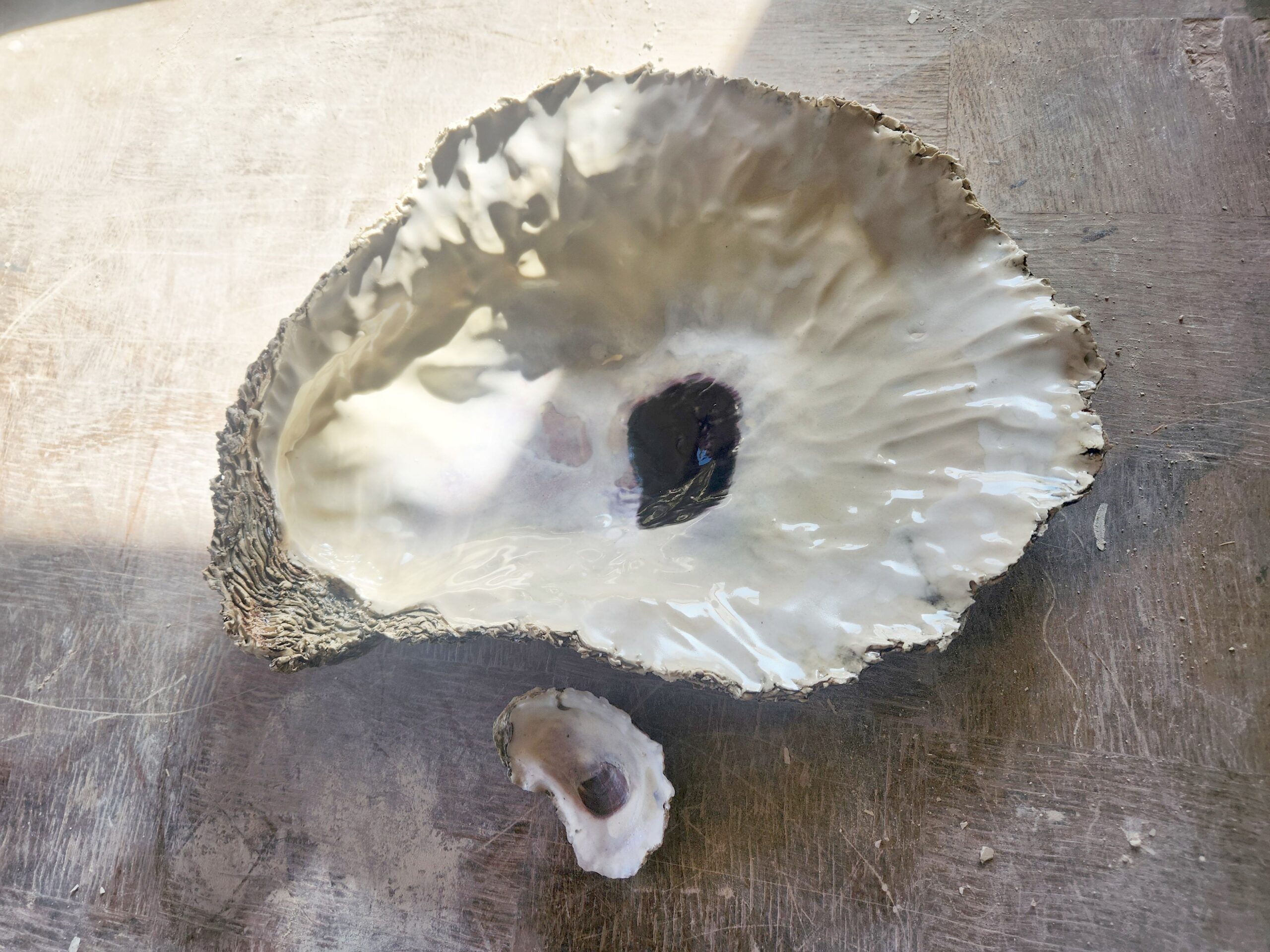
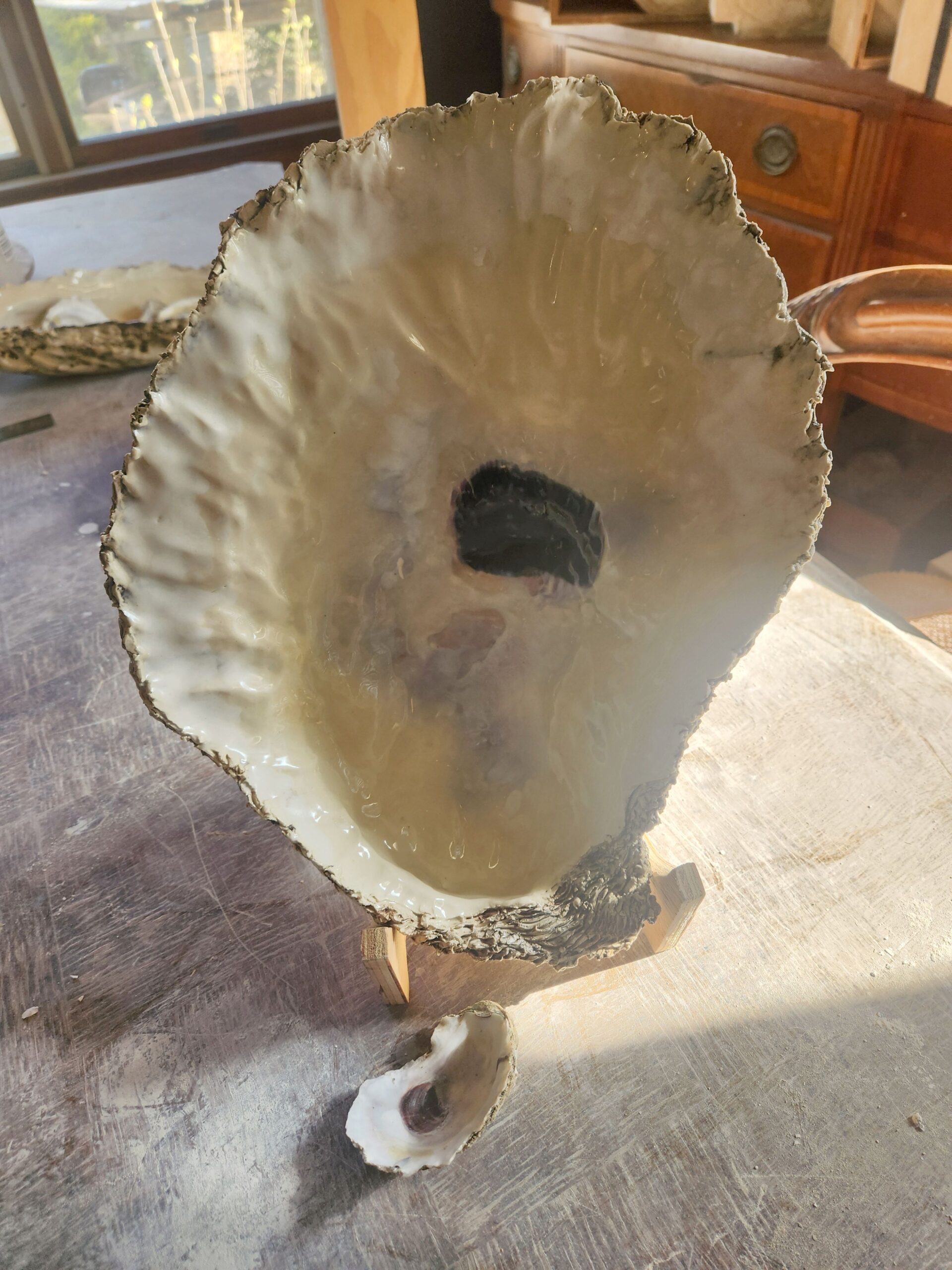
Dredging oysters under a massive mainsail and jib is a uniquely Chesapeake Bay endeavor, a time-honored tradition that has shaped the region’s maritime heritage for generations. Many of the remaining Skipjacks are over 100 years old, their weathered wooden hulls carrying the stories of countless oyster harvests. Designed with a wide beam and shallow draft, these remarkable boats were built specifically for navigating the Bay’s intricate network of oyster-rich tributaries. Today, Skipjacks remain a symbol of the Watermen’s deep connection to the Bay, preserving a way of life that continues to endure despite the passage of time.
From Wikipedia..
The skipjack arose near the end of the 19th century. Dredging for oysters, prohibited in 1820, was again made legal in 1865. Boats of the time were unsuitable, and the bugeye developed out of the log canoe in order to provide a boat with more power adapted to the shallow waters of the oyster beds.
The bugeye was originally constructed with a log hull, and as the supply of appropriate timber was exhausted and construction costs rose, builders looked to other designs. They adapted the sharpies of Long Island Sound by increasing the beam and simplifying the sail plan. The result was cheaper and simpler to construct than the bugeye, and it quickly became the predominant oystering boat in the bay.
Debate remains to this day about the origins of the name. Some speculate it came from a name New England fisherman called the flying fish, bonita. Still others claim it is derived from an archaic English term, meaning an “inexpensive yet useful servant.”

